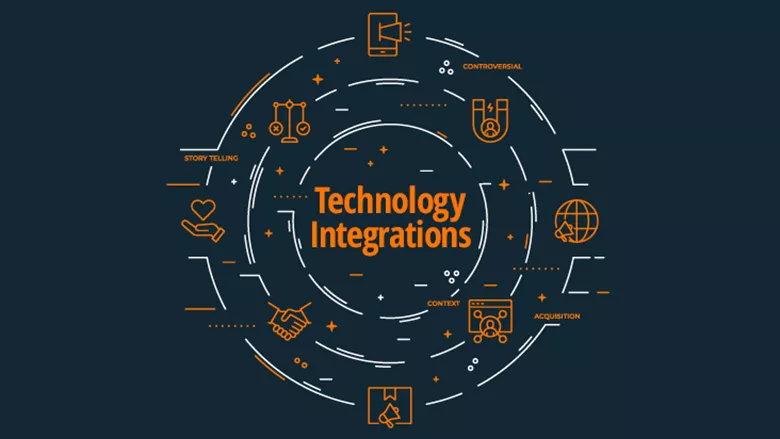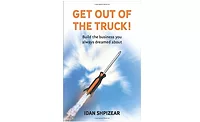Maximizing Tech Integration: Key Strategies for Restoration Business Owners
Three Essential Factors to Consider When Incorporating New Technology

Credit: StudioU / Royalty-free via Getty ImagesStudioU / Royalty-free via Getty Images
What are the three most important factors that business owners should consider when incorporating new technology into their business operations?
1. Identify the Core Problem You're Trying to Solve
One of the biggest mistakes entrepreneurs make when adopting technology is chasing the latest trend without ensuring it addresses a specific business need. This “shiny object syndrome” can lead to wasted time and resources. Instead, business owners must start by identifying their core problem and then seek out technology that directly solves it. By staying focused on solving a defined issue, they can avoid unnecessary complexity and ensure the new tool adds real value to their operations.
2. Conduct a Thorough ROI Analysis
Cost alone should not be the deciding factor when selecting technology. The cheapest software solution is not always the most cost-effective in the long run. Instead, businesses should evaluate the return on investment (ROI) of the technology. A strong ROI means the software should ideally generate at least 10x the value of its cost through one or more of the following:
- Revenue Growth: How much additional revenue or job volume can the tool generate?
- Expense Reduction & Efficiency Gains: How much time and money can be saved by streamlining processes?
- Risk Avoidance: Does it prevent costly issues, such as delayed payments?
- Implementation Cost & Effort: What is the upfront investment in terms of time and resources?
By analyzing these factors, businesses can make data-driven decisions that maximize the impact of their technology investments.
Check out this video to help you determine your ROI.
3. Choose a Solution That is Purpose-Built and Continually Innovating
Many tech solutions in the market may appear suitable at first glance, but not all are designed with the specific needs of the business in mind. It’s crucial to select software that is built for your industry and has a clear product roadmap for future innovation. Many companies release software and fail to improve it over time, leaving businesses with outdated tools that no longer meet their needs. Ensuring that the solution is developed with continuous improvement in mind helps businesses stay ahead of the curve and maintain long-term efficiency.
By considering these three factors problem identification, ROI analysis and selecting a solution designed for long-term success, business owners can confidently integrate technology that truly enhances their operations.
Can you explain how advancements in technology have impacted your business and how you've adapted to these changes?
Advancements in technology have had a profound impact on our business, fundamentally changing the way we operate and adapt to industry challenges. I saw this change firsthand working alongside my father at his company Romexterra, as a home services company, we embraced cutting-edge innovations to streamline processes, enhance efficiency and improve decision-making.
One of the biggest changes has been the adoption of 3D imaging technology. Previously, our team relied on scope sheets and tick sheets to document job sites, a process that was both time-consuming and prone to human error. With 3D imaging, we’ve eliminated the need for redundant paperwork and even reduced the number of positions required for documentation. This shift has led to increased accuracy, efficiency and faster job completion times.
Another major advancement has been AI-driven solutions. Tools like ChatGPT and AI-powered bots have transformed the way we handle claims and adjuster negotiations. These bots can quickly synthesize information, provide rebuttals and assist in navigating complex insurance claims—significantly reducing the time and effort required from our team.
In addition, business intelligence tools have allowed us to visualize key data and ask the right questions about our company’s performance. Having instant access to real-time analytics helps us make faster, more informed decisions that drive business growth.
We’ve also adapted by implementing contactless equipment tracking (think about companies like Kahi), which eliminates the need for manual barcode scanning. This has streamlined our inventory management process, ensuring that our equipment is always accounted for without requiring extra administrative work.
If I were to summarize the impact of technology on our business with an analogy, I’d compare it to broccoli and chocolate. As business owners and technicians, we have aspects of our work that we love (the chocolate) things like taking care of customers, providing excellent service and making a real impact. But there are also the tedious, time-consuming tasks (the broccoli) that we don’t necessarily enjoy. Technology has helped us eliminate a lot of the “broccoli,” allowing us to focus more on the “chocolate.”
Ultimately, by embracing these advancements, we’ve been able to work smarter, not harder, ensuring that our business remains competitive, efficient and customer-focused in an ever-evolving industry
You recently considered transitioning from Hubspot to Salesforce. Could you elaborate on the reasons behind your decision not to switch and the importance of thoroughly evaluating the pros and cons for your business.
We recently considered transitioning from HubSpot to Salesforce, but ultimately, we decided not to make the switch because there was no major problem that needed solving. While some new team members, particularly those with experience in larger organizations, advocated for Salesforce, we took a step back to evaluate whether the switch was truly necessary for our business.
Our systems and processes within HubSpot were already well established and while there were areas for improvement, these could be addressed through internal optimizations rather than a complete system overhaul. We recognized that switching to Salesforce would have required a significant investment in time, money and retraining, without a clear pain point justifying the change.
It’s easy to get caught up in the allure of a “bigger” or “more advanced” tool, but if it doesn’t address a critical business need, it can end up being an unnecessary distraction—what we often refer to as “shiny object syndrome.”
Ultimately, our approach to technology adoption is problem-driven, not trend-driven. If a system isn’t broken and is still serving our needs, we focus on optimizing what we have rather than chasing new tools simply because they’re popular.
While AI can be incredibly beneficial, improper use can lead to inaccuracies. How do you and your team ensure that AI tools are used correctly to avoid such issues? Please share three top practices.
1. Always Ask for Multiple Results
Unlike traditional search engines like Google, which provide thousands of results that users can sift through, AI-powered large language models (LLMs) typically generate a single response. However, that one response isn’t always accurate—it can be misleading or even completely incorrect. To mitigate this risk, we always make sure to ask AI for multiple variations of an answer or cross-check with other sources. This ensures that we are not relying on a single, potentially flawed AI-generated output.
2. Never Blindly Copy & Paste AI-Generated Content
AI can speed up content creation, but it lacks the human touch, natural expression and contextual awareness that make communication authentic. Whether it’s an email to an adjuster, a marketing post or an internal document, it’s easy to spot AI-generated text when it lacks personality or nuance. That’s why we never blindly copy and paste AI outputs. Instead, we use AI as a tool to enhance and refine our work, rather than replace human input. We make sure that every AI-assisted piece of content still reflects our voice, values and intent.
3. Understand AI’s Limitations – It’s Not Perfect
AI is not infallible, it can hallucinate (generate false or misleading information), misinterpret context and even provide outdated data. That’s why we never treat AI as an all-knowing source. We always apply critical thinking, fact-check responses and validate outputs before acting on them. AI is a tool to support decision-making, not a substitute for human judgment.
Looking ahead, what emerging technologies are you most excited about and how do you plan to integrate them into your business strategy?
AI-Powered Marketing & Lead Flow Optimization
One of the biggest struggles for restoration contractors is understanding their return on ad spend (ROAS) and improving their lead generation efforts. To address this, we’re building a marketing suite that integrates AI-driven best practices to manage and optimize ad campaigns automatically. This tool will provide restorers with complete visibility into their ad spend efficiency, ensuring they maximize their marketing dollars.
Practicing Cash Flow Management with Albi Pay
Cash flow remains a major pain point in the industry, especially when dealing with insurance checks requiring multiple signatures or slow payment processes. That’s why we just launched Albi Pay, which will streamline credit card and ACH payments, as well as introduce a digital check-signing solution to cut down on delays. Additionally, we’re exploring lending options to help restorers bridge cash flow gaps and keep their businesses running smoothly.
AI as the New UI – Automating Tedious Tasks
We strongly believe that AI is the new user interface (UI) and we’re working towards a future where restoration technicians spend less time manually entering data. Instead of forcing techs to log every moisture reading or job update—something they dislike doing—we aim to develop seamless AI-driven data capture and reporting tools. This means essential documents like dry logs can be generated automatically, freeing up technicians to focus on what they do best—helping customers.
Ultimately, our vision is to propel the restoration industry forward by eliminating inefficiencies, making work more enjoyable and helping restorers focus on growth instead of administrative headaches. We’re honored to be part of this movement and can’t wait to see where these advancements take the industry next.
Looking for a reprint of this article?
From high-res PDFs to custom plaques, order your copy today!









